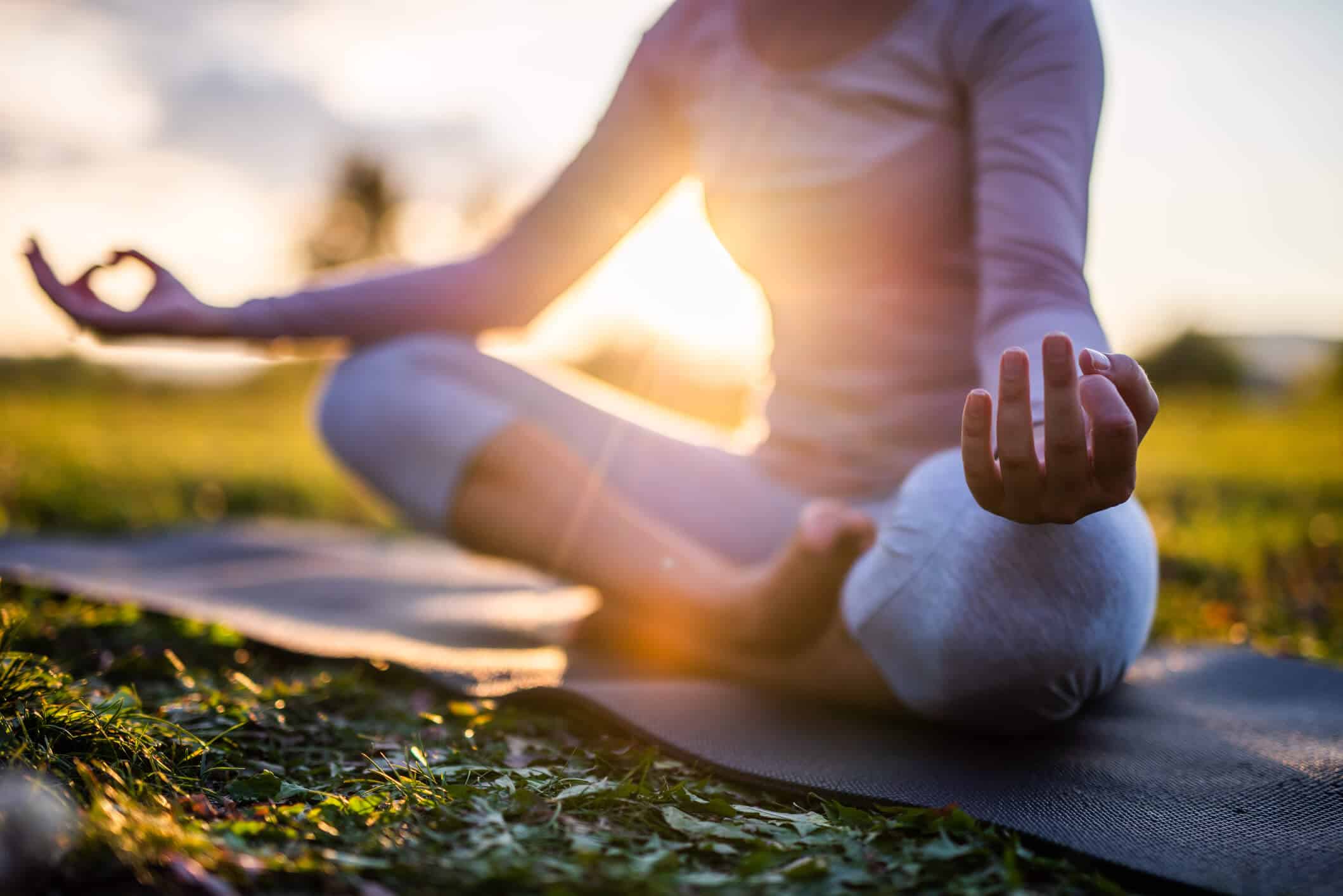In a world filled with constant noise and distraction, finding your spiritual center has become more essential than ever. The journey toward spiritual awakening doesn’t require retreating to a monastery or abandoning modern life—it begins with simple, intentional practices woven into your everyday routine.
Spiritual alignment is the harmonious state where your thoughts, actions, and inner being resonate at the same frequency. When you achieve this balance, you experience greater clarity, peace, and purpose. The path to enlightenment isn’t reserved for mystics or gurus; it’s accessible to anyone willing to commit to consistent daily rituals that nurture the soul and expand consciousness.
🌅 The Foundation: Understanding Spiritual Alignment
Before diving into specific practices, it’s crucial to understand what spiritual alignment truly means. This state occurs when your physical, emotional, mental, and spiritual bodies work in harmony. Many people move through life feeling fragmented, with their actions contradicting their values, their minds racing while their bodies remain tense, and their spirits yearning for something more meaningful.
Spiritual alignment brings coherence to this chaos. It creates a sense of wholeness where your daily choices reflect your deepest values, your energy flows freely, and you feel connected to something greater than yourself. This isn’t about perfection—it’s about awareness and intentional movement toward your highest self.
Creating Sacred Space in Your Daily Life
Your environment significantly influences your spiritual practice. Designating a sacred space in your home serves as an anchor for your spiritual rituals. This doesn’t require an entire room; even a small corner with a cushion, candle, and meaningful objects can become your sanctuary.
The key is consistency. When you return to the same physical space each day for spiritual practice, you create an energetic container that supports deeper states of consciousness. Your mind begins to associate this space with inner work, making it easier to shift into a meditative state when you enter it.
Elements of an Effective Sacred Space
Consider incorporating these elements into your spiritual corner:
- Natural elements like plants, crystals, or stones to ground your energy
- Soft lighting or candles to create ambiance and mark the transition into sacred time
- Comfortable seating that supports an upright, alert posture
- Inspirational images, symbols, or texts that resonate with your spiritual path
- Items representing the elements—earth, water, fire, air, and spirit
Morning Rituals: Setting Your Spiritual Compass ☀️
The morning hours hold particular power for spiritual practice. Your mind is fresh, the world is quieter, and you have the opportunity to set the energetic tone for your entire day. Establishing a morning ritual creates momentum that carries through all your activities.
Begin by waking at a consistent time, ideally before sunrise when the veil between worlds feels thinner. Resist the urge to immediately check your phone—this instantly pulls your energy outward into reactive mode rather than allowing you to center yourself first.
The Power of Intentional Awakening
As you transition from sleep to wakefulness, take several conscious breaths before opening your eyes. Place your hands on your heart and express gratitude for another day of life. This simple practice shifts you from unconscious existence to mindful awareness.
Next, spend five to ten minutes in meditation or silent contemplation. This doesn’t need to be complicated. Simply sit comfortably, close your eyes, and observe your breath. When thoughts arise—and they will—acknowledge them without judgment and return your attention to breathing.
Movement as Medicine
Following stillness, introduce gentle movement to awaken your body and move energy through your system. Yoga, tai chi, or simple stretching helps release stagnant energy accumulated during sleep. As you move, maintain awareness of your breath and the sensations in your body, transforming exercise into a moving meditation.
Midday Check-Ins: Maintaining Spiritual Alignment Throughout Your Day
Spiritual practice shouldn’t be confined to morning or evening bookends. The real test of your spiritual development is how you navigate the challenges and opportunities of daily life. Incorporating brief midday check-ins helps you maintain alignment when distractions and stressors accumulate.
Set reminders on your phone for three specific times during your workday. When the reminder chimes, pause whatever you’re doing for just two minutes. Close your eyes, take several deep breaths, and scan your body for tension. Notice your emotional state without trying to change it. This practice of witnessing creates space between you and your reactions.
Mindful Eating as Spiritual Practice
Transform your lunch break into a spiritual ritual rather than mindlessly consuming food while scrolling through screens. Before eating, take a moment to appreciate the journey your food made to reach you—the sun, soil, water, and countless hands involved in bringing nourishment to your table.
Eat slowly, savoring each bite. Notice textures, flavors, and how the food makes your body feel. This practice of mindful eating grounds you in the present moment and honors the sacred act of nourishing your physical temple.
🧘♀️ Breathwork: The Bridge Between Body and Spirit
Conscious breathing represents one of the most powerful yet underutilized spiritual tools available. Your breath serves as a bridge between your conscious and unconscious mind, your physical body and energetic field. By learning to control and direct your breath, you gain access to expanded states of consciousness and profound healing.
Different breathing techniques produce different effects. Some energize and activate, while others calm and center. Experiment with various practices to discover what resonates with your needs.
Essential Breathwork Techniques
Box breathing creates balance and calm: Inhale for four counts, hold for four, exhale for four, hold empty for four. Repeat for five minutes whenever you feel scattered or anxious.
Alternate nostril breathing balances your left and right brain hemispheres: Close your right nostril, inhale through the left, then close the left and exhale through the right. Inhale right, exhale left. Continue this pattern for several minutes.
Breath of fire awakens energy: Take rapid, rhythmic breaths through your nose, pumping your belly with each exhale. Practice for one to three minutes to energize your system and clear mental fog.
Evening Wind-Down: Releasing and Integrating
As daylight fades, your evening rituals help you process the day’s experiences, release what no longer serves you, and prepare for restorative sleep. This transition time is crucial for maintaining spiritual momentum.
Begin your evening wind-down at least one hour before bed. Dim the lights in your home to signal to your body that it’s time to shift into rest mode. If possible, light candles instead of using bright artificial lights.
Journaling for Spiritual Insight ✍️
Free-form journaling serves as a powerful tool for processing emotions and accessing inner wisdom. Spend ten to fifteen minutes writing without censoring yourself. Don’t worry about grammar, coherence, or anyone else reading your words. Let your pen become a channel for whatever needs to emerge.
You might also try specific journaling prompts that support spiritual growth:
- What moments today made me feel most alive and aligned?
- Where did I abandon myself or my values, and what can I learn from this?
- What am I ready to release or forgive?
- What subtle guidance or synchronicities did I notice today?
- How did I serve something greater than myself?
Gratitude as a Spiritual Practice
Before sleep, list five specific things you’re grateful for from your day. Move beyond generic statements to genuine appreciation for particular moments, interactions, or experiences. Gratitude shifts your vibration and trains your mind to notice abundance rather than lack.
The Role of Meditation in Daily Spiritual Practice 🧘
While meditation has been mentioned in various contexts, it deserves deeper exploration as the cornerstone of spiritual development. Meditation creates space—space between thoughts, between stimulus and response, between your true self and the conditioned patterns that run your life.
There’s no single “correct” way to meditate, despite what some teachers might claim. The best meditation practice is the one you’ll actually do consistently. Start with just five minutes daily and gradually increase as the practice becomes more natural.
Types of Meditation for Different Needs
Mindfulness meditation builds awareness by observing thoughts, sensations, and emotions without attachment. Simply notice what arises in your experience without labeling it as good or bad.
Loving-kindness meditation cultivates compassion by silently offering well-wishes to yourself, loved ones, neutral people, difficult people, and all beings. This practice softens the heart and dissolves boundaries between self and other.
Visualization meditation uses mental imagery to manifest desired states or outcomes. Imagine yourself embodying the qualities you wish to develop or experiencing the life you’re creating.
Mantra meditation employs repeated sounds or phrases to focus the mind and raise your vibration. Choose a mantra that resonates with your intention, whether a traditional Sanskrit phrase or a simple affirmation.
Energy Hygiene: Protecting Your Spiritual Field
Just as you shower to clean your physical body, you need regular practices to clear your energetic field. Throughout the day, you absorb energy from people, places, and situations. Without conscious clearing, this accumulated energy can cloud your alignment and drain your vitality.
Develop a simple energy clearing routine you can perform daily. This might include visualization techniques like imagining yourself standing under a waterfall of golden light that washes away any energy that isn’t yours. Or you might prefer physical methods like taking a salt bath, smudging with sage or palo santo, or spending time in nature.
Setting Energetic Boundaries
Spiritual sensitivity is a gift, but without boundaries, it becomes a burden. Learn to consciously manage your energetic field by setting clear intentions about what energy you allow in and what you deflect. Before entering challenging situations, visualize yourself surrounded by a protective bubble of white light that allows positive energy through while repelling negativity.
🌙 Moon Cycles and Seasonal Attunement
Aligning your spiritual practice with natural cycles deepens your connection to the rhythms of earth and cosmos. The moon’s phases offer a powerful framework for spiritual work, with each phase supporting different types of intention and practice.
The new moon represents new beginnings—an ideal time for setting intentions and planting seeds for what you wish to grow. During the waxing moon, focus on building, attracting, and expanding. The full moon brings illumination and is perfect for release work and celebration. The waning moon supports letting go, completing, and clearing.
Similarly, the changing seasons provide natural opportunities to adjust your spiritual practices. Winter invites introspection and rest. Spring supports new growth and creativity. Summer encourages expression and expansion. Autumn calls for harvest and gratitude.
Integrating Spiritual Practice with Daily Life
The ultimate goal isn’t to create separation between “spiritual time” and “regular life” but to infuse all moments with spiritual awareness. This integration transforms mundane activities into sacred practices.
Washing dishes becomes a meditation on cleansing and renewal. Commuting offers opportunities for breathwork or listening to spiritual teachings. Conversations become chances to practice presence and compassionate listening. Every moment holds potential for awakening when you bring conscious awareness to it.
The Practice of Presence
Presence—full attention to the current moment—is perhaps the most fundamental spiritual practice. Most people spend their lives lost in thoughts about the past or future, missing the only moment where life actually occurs: now.
Throughout your day, use sensory anchors to return to presence. Notice five things you can see, four you can touch, three you can hear, two you can smell, and one you can taste. This simple practice pulls you out of mental loops and into direct experience of reality.
Building Sustainable Spiritual Momentum 🌟
The difference between people who transform through spiritual practice and those who collect interesting ideas but remain unchanged comes down to consistency. You don’t need hours of practice daily—you need regular, sincere engagement with practices that resonate with your soul.
Start small and build gradually. Choose one or two practices from this article that genuinely appeal to you. Commit to doing them daily for at least 30 days. After a month, these practices will feel more natural, and you can add additional elements to your spiritual routine.
Track your practice in a simple way—a checkmark on a calendar, a note in your journal, or a reminder app. This creates accountability and allows you to notice patterns over time. You’ll likely discover that your mood, clarity, and overall well-being directly correlate with the consistency of your spiritual practice.
The Ripple Effect of Personal Alignment
As you deepen your spiritual practice and alignment, something remarkable happens: you begin to positively impact everyone and everything around you. Your increased presence, compassion, and centeredness creates a field that others feel, even if they can’t articulate it.
This isn’t about becoming perfect or never struggling. It’s about developing the awareness and tools to navigate life’s challenges from a grounded, conscious place rather than from unconscious reactivity. When you do this inner work, you contribute to collective consciousness in ways both subtle and profound.
Your spiritual practice becomes an offering—not just for your own evolution, but for the healing and awakening of all beings. In this way, your daily rituals for alignment and enlightenment serve a purpose far greater than personal development. They become your contribution to a world desperately in need of more conscious, compassionate humans.
The journey of spiritual awakening is both intensely personal and universally shared. Each person’s path looks different, yet we all seek the same fundamental truths: peace, purpose, connection, and understanding. Your daily rituals create the conditions for these truths to reveal themselves, not as abstract concepts but as lived experience. Begin today, begin simply, and trust that each conscious breath, each moment of presence, each small act of alignment moves you closer to the enlightenment that is your birthright.
Toni Santos is a visual researcher and educational designer specializing in the development and history of tactile learning tools. Through a hands-on and sensory-focused lens, Toni investigates how physical objects and textures have been used to enhance understanding, memory, and creativity across cultures and ages, while exploring the transformative practices of shamanic journeying, sacred plant medicines, and spiritual rituals. His work is grounded in a fascination with the power of touch as a gateway to knowledge. From embossed maps and textured alphabets to handcrafted manipulatives and sensory kits, Toni uncovers the subtle ways tactile tools shape cognitive development and learning experiences, while engaging with shamanic journeying and altered states, sacred plant medicines and their use, spirit animals and totems, and rituals for personal transformation. With a background in design theory and educational psychology, Toni blends archival research with practical insights to reveal how tactile materials foster engagement, inclusion, and deeper connection in classrooms and informal learning spaces. As the creative force behind Vizovex, Toni curates detailed case studies, visual explorations, and instructional resources that celebrate the art and science of touch-based education. His work is a tribute to: The transformative role of tactile tools in learning The intersection of sensory experience, cognition, and spiritual insight The craft and innovation behind educational objects and ritual practices Whether you’re an educator, designer, or lifelong learner, Toni invites you to explore the rich textures of knowledge—one touch, one tool, one discovery at a time.




